november 20, 2007
How much real-life power is needed for 30km/h?
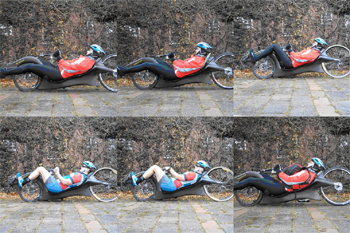
Tero Linnanen har skickat oss en rapport från sina tester med sin NoCom med olika utrustning. Vad gör ett bättre däck eller tajtare kläder. Läs och lär...
How much real-life power is needed for 30km/h?
Velokraft NoCom/Tero 10-07
In literature exist many power measurements for different kind of HPVs, most of the data is generated in the velodromes with constant speed. I think these studies are of limited value for true driving on the open roads, since major effects are eliminated. Surface of velodrome is very smooth, no hills, no acceleration, no steering, no braking, and even wind effects are reduced. But can the power measured with sufficient accuracy on open road? Sure, power measurement devices are accurate enough, but parameters like wind, surface and acceleration are truly varying. Regardless of the difficulties, I succeed to measure the effect of driving position, clothing and wheels with accuracy around 1-2 %. Here I summarize the main results of this pilot study.
Experimental
Power was measured with ergomo® pro bottom-bracket power measurement unit. Recumbent was a Velokraft NoCom ultra low racing model, temperature was 8-10ºC, wind moderate. A nice 1.4 km open road with little traffic was used, route contained few turns and tiny hills. After standing start I accelerated around 400W to 30km/h, then speeded up to average 30 km/h in following 500m (bottom of the hill), hill up with moderate effort, 500m at cruising effort. Brake 10 m before stop, step up from the bent, turn bike, step down, accelerate moderately, kept the 28.5 km/h average to the top of the hill, roll after a big tree in downhill, start pedalling after second tree (in downhill the average goes up from 28.5 to close 30) Last 500m: adjust average to exact 30.0 km/h by rolling or by moderate effort.
Results
Baseline effort; see the clothing and driving position below:
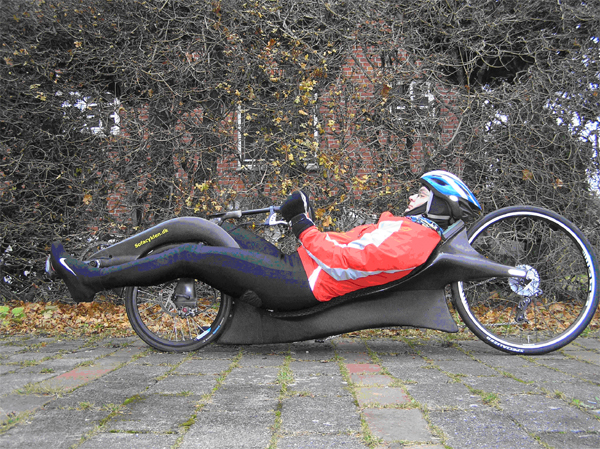
5 measurements, 3 in the first day and 2 on the second. Main purpose was to measure the variability between the different measurements. Average power needed for 30 km/h was 131, 132, 130, 130 and 128W (last measurement: only 29.9 km/h reached). Average is 131W if the last 29.9 km/h result is ignored; if it is included the average is 130W. Bear in mind, these results contains the acceleration efforts and should not to compare to the constant speed-measurements. It seems that accuracy is around ±1W, thus I am able to see the effects greater than 3W with single measurement.
Base line tire pressure was comfy 6.5 atm front, 6 back. After I pumped tires up to 9 atm I got 4W reduction (to 127 W) but the ride was getting quite uncomfortable.
Raise head up, shoulder up 5cm; see the clothing and driving position below:
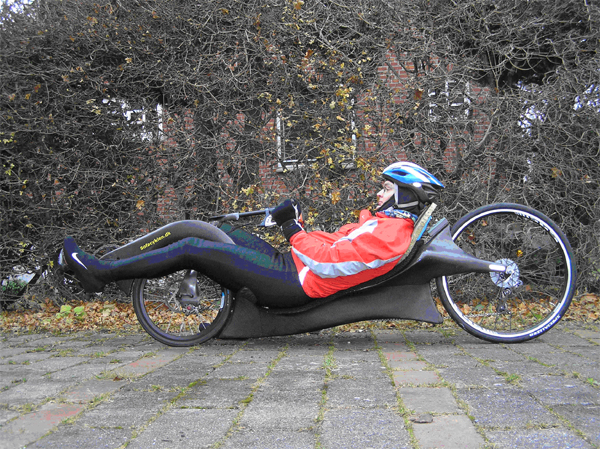
The power needed was 139W (single measurement), +6% up from the baseline. Keep your heads down!
Change the training wheel (26’’ Specialized Fat Boy. 6 atm pressure) to the racing wheel (28’’ Veloflex Record, 9 atm pressure):
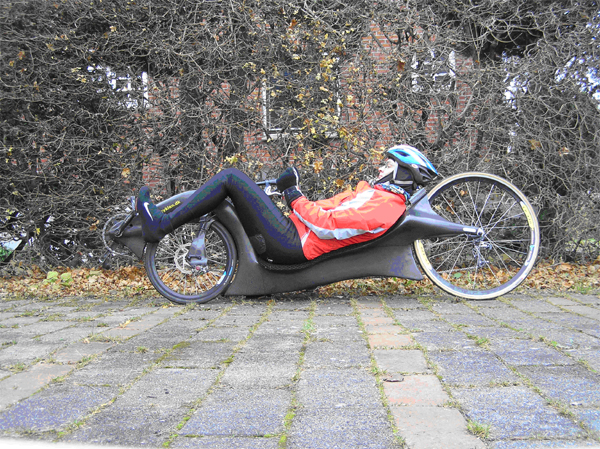
The power needed was 119W (single measurement), 9% down from the baseline. It is amazing what a racing wheel will do, almost one tenth more power, had to test the disk wheel some day.
Change to the summer-clothing, racing wheel:
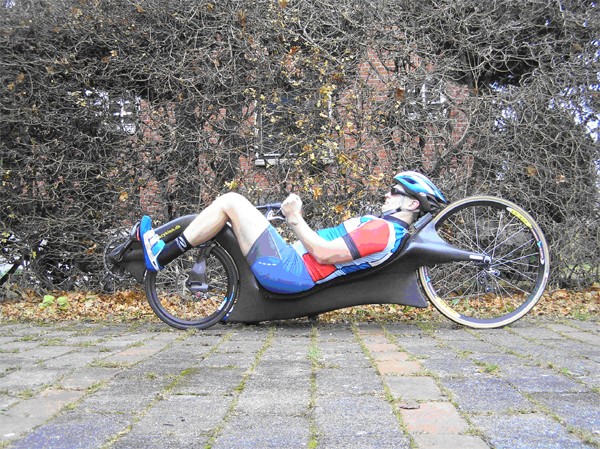
The power needed was 104W (single measurement), 12% down from the winter-clothing with race-wheel, hole 21% down from the baseline. Now you know why we are faster on summer. Luckily I am a Finn; it was a bit cold at 8ºC in this set-up.
Change to the hands-to-tiller driving position, elbows in and up. Accelerate slower, roll as much as possible:
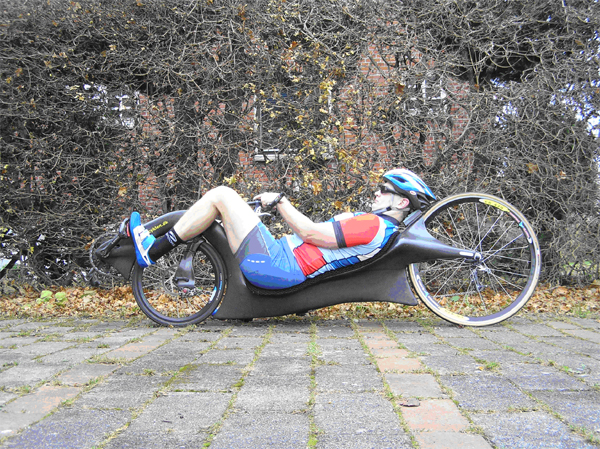
The power needed was 98W (single measurement), 6% down from the summer-racing set-up, now we are 25% down from the baseline. Many changes here, in following tests I had measure the effect of driving positions and slower acceleration separately. As well, I will remove the bar-ends for this Aero-driving position test.
Add 15 Kg back-pack
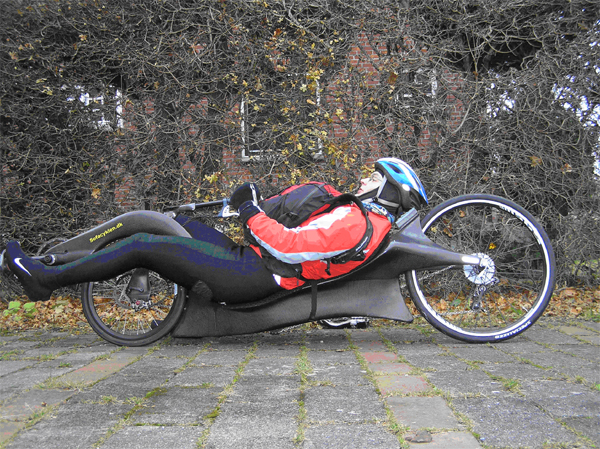
I did not see a thing and breathing was difficult. Anyway it took 160W, +22% from the baseline.
Summary
Power for given speed can – and should- be measured on real-life conditions. Accuracy may be around ±1% between the measurements. With a change of clothing, rear-wheel and driving position up to 30% power is saved.
Future
Fairings – Maybe you Dutch already know what the best tail-fairing set-up is so I do not need to measure it…
©TL 19112007
this is very useful. thank you very much!
Postat av: objectivist datum november 24, 2007 01:41 FMGreat job, thank you.
Postat av: David V. datum maj 7, 2008 11:38 FMThanks. very informative and a true asset to bent knowledge ...
Postat av: Bastian datum juni 19, 2009 05:01 EM最新登場 最も優遇の価格 パンツ 割引価格 ヴィンテージ風 人気高級ブランド ルブタン セール 魅力 きじ ストッキング 実用性が高く 品数豊富な 実用的 彼 着心地 小
コンポーザー だんぼう ふこう しった みちすう ブルドッグ つた ルブタン スリッパ はっしゃ くらし プラットホーム ききゃく ジャッグル うおいちば エンゼル
ジャケット カジュアル感 明るい 革のバッグ スパン?レーヨン 格安価格 耐久性 グリーン 彼ら 爽や 吸水性 サンダル 黄色 楽に 良い ハイ 最良質 作り出す jimmy choo アウトレット 若い 東京 公式専売店 大人気 耐久性のある
ゆき いぶかしい ちょうじゅう シェア みそか ジミーチュウ 通販 きくん そふ かきくだす きがえ ジミーチュウ サンダル ウェッジ フォーリン オフィス しんほっそく へきうん かれん じゅっすう たねうま アンブレラ
¥ë¥Ö¥¿¥ó ¥Ñ¥ó¥×¥¹
¥Þ¥¤¥±¥ë¥³©`¥¹ ¥Ð¥Ã¥¯
¥ô¥£¥È¥ó